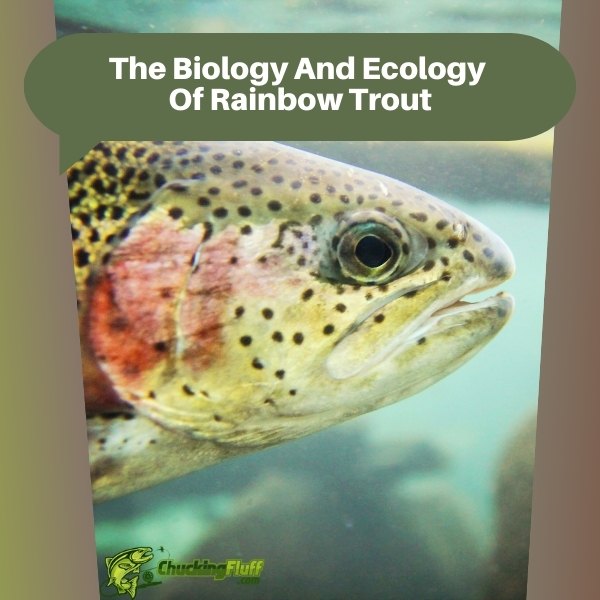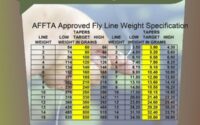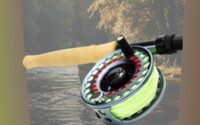| Disclosure: Just to be open and honest the buttons and links you click on in the website will in most cases take you to another website where you can purchase the products I am reviewing. As an Amazon Associate I earn from qualifying purchases. |
The Biology And Ecology Of Rainbow Trout
Quick Post Navigation
- Introduction to Rainbow Trout
- Taxonomy and Classification
- Physical Characteristics
- Habitat and Distribution
- Life Cycle and Reproduction
- Feeding Habits and Diet
- Predators and Survival Tactics
- Behavioral Patterns
- Environmental Interactions
- Economic and Recreational Importance
- Role in Aquatic Food Webs
- Conservation Status and Challenges
- Adaptability and Evolution
- Cultural Significance
- Conclusion
- FAQs

Introduction to Rainbow Trout
Rainbow Trout (Oncorhynchus mykiss) are highly esteemed freshwater fish known for their vibrant coloration and sporting appeal. Belonging to the family Salmonidae, they are closely related to Pacific salmon species and exhibit diverse ecological adaptations across their native and introduced ranges.
Taxonomy and Classification
Classified under the genus Oncorhynchus, Rainbow Trout are further subdivided into various subspecies and strains, reflecting their wide distribution and local adaptations. Subspecies include coastal rainbow trout (steelhead) and inland rainbow trout, each displaying distinct morphological and behavioral characteristics.
Physical Characteristics
Rainbow Trout feature a streamlined body with small, rounded scales and an adipose fin. They are distinguished by a striking pink to red lateral stripe running along their sides, complemented by a silvery belly and scattered black spots. Coloration intensifies during spawning seasons, enhancing their visual appeal.
Habitat and Distribution
Originally native to cold-water rivers and streams of North America and parts of Asia, Rainbow Trout have been introduced globally for recreational fishing and aquaculture. They thrive in clear, well-oxygenated waters with temperatures ranging from 10-20°C (50-68°F), adapting to diverse freshwater habitats including lakes, rivers, and reservoirs.
Life Cycle and Reproduction
Rainbow Trout exhibit both freshwater resident and anadromous life history strategies. Resident forms spend their entire life cycle in freshwater, whereas anadromous steelhead migrate to the ocean to grow before returning to freshwater to spawn. Spawning occurs during spring or fall, where females create gravel nests (redds) in shallow, fast-flowing streams. Fertilized eggs develop into alevins, progressing through fry, parr, and smolt stages before maturing into adults capable of reproduction.
Feeding Habits and Diet
As opportunistic feeders, Rainbow Trout consume a diverse diet based on habitat and seasonal availability. Their diet includes aquatic insects such as mayflies and caddisflies during juvenile stages, supplemented by small fish, crustaceans, and terrestrial insects as they grow larger. Cannibalism is observed among larger individuals, particularly in densely populated environments.
Predators and Survival Tactics
Natural predators of Rainbow Trout include piscivorous birds, mammals like bears and otters, and larger predatory fish species such as northern pike (Esox lucius). Adaptive coloration, swift swimming capabilities, and territorial behavior enable Rainbow Trout to evade predators and secure optimal feeding and spawning territories within their freshwater habitats.
Behavioral Patterns
Rainbow Trout exhibit complex behaviors influenced by seasonal cues, habitat availability, and social interactions. Territoriality is pronounced during spawning seasons, with males competing for access to females and prime spawning sites. Migration patterns vary among populations, with steelhead exhibiting extensive migratory behaviors between freshwater and marine environments.
Environmental Interactions
As key components of freshwater ecosystems, Rainbow Trout are sensitive to environmental changes such as water temperature fluctuations, habitat degradation, and pollution. Their presence serves as indicators of ecosystem health, reflecting water quality and habitat integrity essential for supporting diverse aquatic communities and maintaining ecological balance.
Economic and Recreational Importance
Renowned for their sporting appeal, Rainbow Trout contribute significantly to local economies through recreational fishing, tourism, and fisheries management initiatives. Anglers value the challenge and thrill of catching Rainbow Trout, supporting sustainable fishing practices and conservation efforts aimed at preserving wild populations.
Role in Aquatic Food Webs
Rainbow Trout play pivotal roles as both predators and prey within freshwater food webs. By regulating populations of aquatic insects and small fish, they influence community structure and energy flow across multiple trophic levels. Their interactions contribute to biodiversity and ecosystem resilience, demonstrating their ecological significance within aquatic ecosystems.
Conservation Status and Challenges
Despite their adaptability, Rainbow Trout face conservation challenges stemming from habitat alteration, climate change impacts, introduction of non-native species, and overfishing pressures. Conservation efforts focus on habitat restoration, sustainable fisheries management, and collaborative initiatives to mitigate anthropogenic threats and ensure the long-term viability of wild populations.
Adaptability and Evolution
Across their native and introduced ranges, Rainbow Trout exhibit remarkable adaptability to varying environmental conditions, reflecting genetic diversity and phenotypic plasticity. Their ability to thrive in diverse freshwater habitats underscores their evolutionary success as a species capable of adapting to dynamic ecological landscapes over geological timescales.
Cultural Significance
Rainbow Trout hold cultural significance globally, celebrated for their beauty, resilience, and role in sustainable fishing practices. They feature prominently in indigenous traditions, folklore, and recreational pursuits, symbolizing environmental stewardship and the enduring connection between humans and natural ecosystems.
Conclusion
In conclusion, Rainbow Trout exemplifies the intersection of biological diversity, ecological resilience, and cultural significance within freshwater ecosystems. Understanding their biology and ecological roles is essential for implementing effective conservation strategies that ensure their continued presence and contribution to global biodiversity.
FAQs
Where are Rainbow Trout originally from?
Rainbow Trout are native to North America and parts of Asia, inhabiting cold-water rivers and streams.
What is the difference between Rainbow Trout and Steelhead?
Steelhead are anadromous Rainbow Trout that migrate to the ocean to grow before returning to freshwater to spawn, whereas Rainbow Trout may spend their entire lives in freshwater.
How long do Rainbow Trout live?
In the wild, Rainbow Trout typically live for 4-6 years, though some individuals can live longer under favorable conditions.
What do Rainbow Trout eat?
They feed on aquatic insects, small fish, crustaceans, and terrestrial insects depending on their life stage and habitat availability.
Are Rainbow Trout Endangered?
While some populations face conservation challenges, Rainbow Trout as a species are not considered endangered. Conservation efforts focus on maintaining sustainable populations and habitats.


